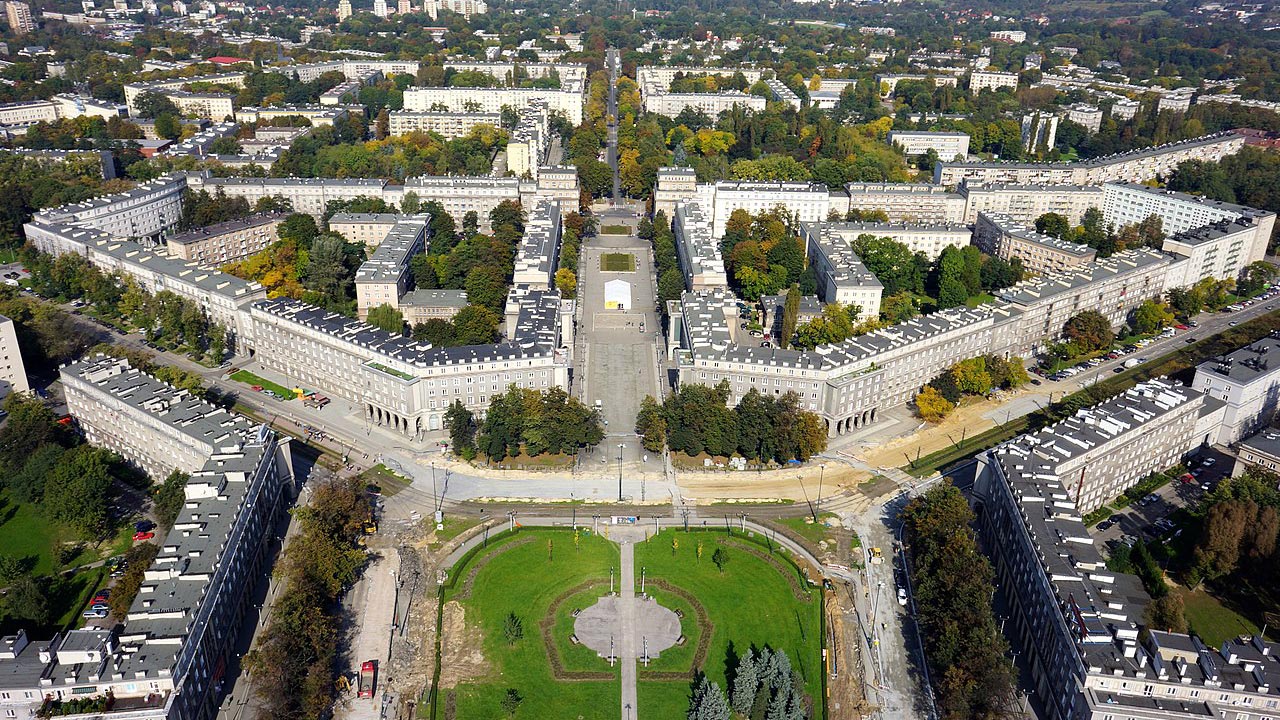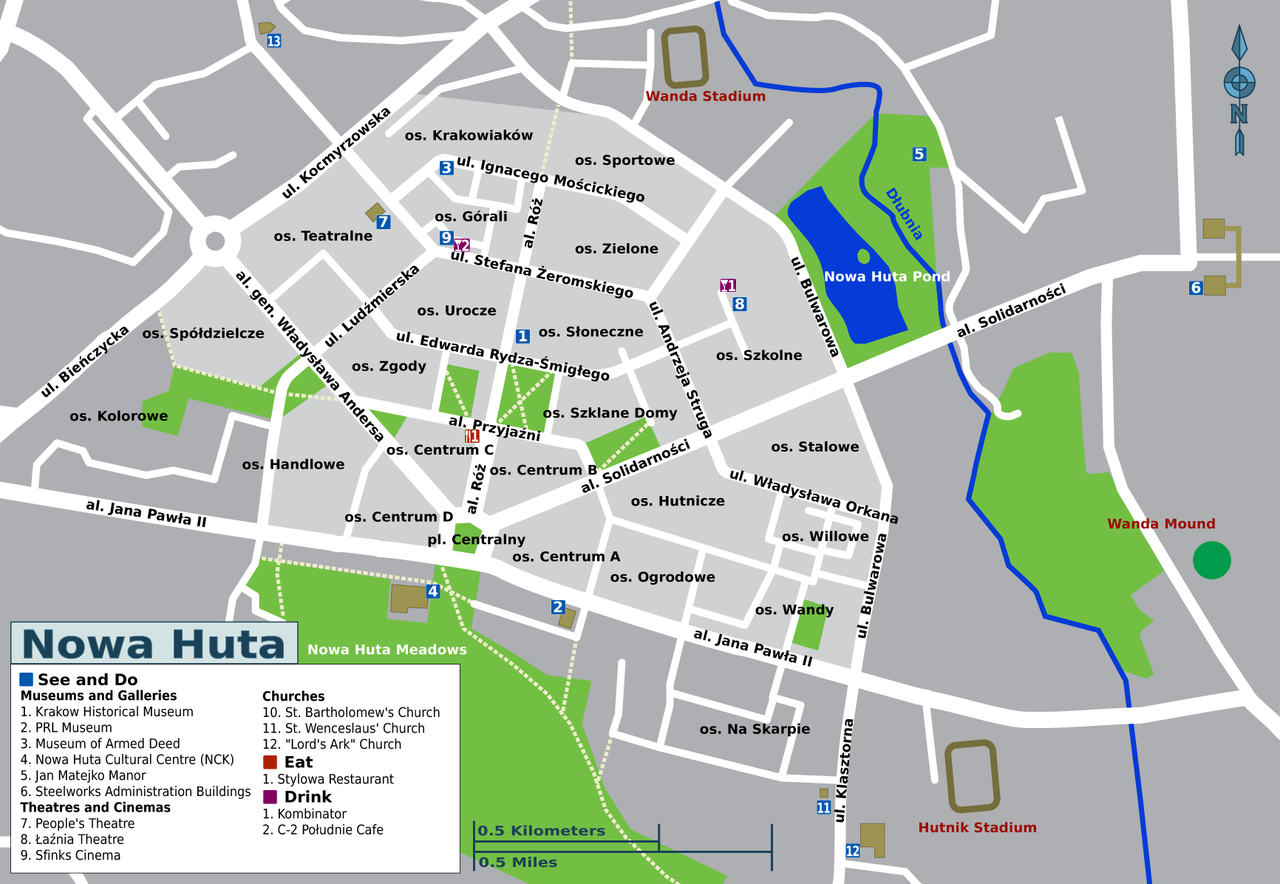
Nowa Huta
Krakow, Poland
A postwar town, built for the workers of a new steel plant in communist Poland.
| Garden City Type: | Former company town |
| Country: | Poland |
| City: | Krakow |
| Years of construction: |
1949 Start construction
|
| Initiator/client: | Municipality of Krakow |
| Architect or related: |
Tadeusz Ptaszycki Poland's leading architects and urban planners of the day were involved in creating Nowa Huta. They interestingly didn't get direct instructions on how the city should look. Knowing that the city was meant to be an urban ideal, their design emphasised parks and spacious apartments, and ensured that every block had all the |
| Heritage status: | Yes |
| Explanation: | In 2023 Nowa Huta was declared a historical monument. |
| General condition of Garden City: | Good condition |
General description
Nowa Huta ('New Steel Mill') lies east of the southern Polish city of Krakow. Initially built as an independent city, it was planned as a huge center of heavy industry. The city was intended to become an ideal, utopian city for Socialist propaganda, and populated primarily by industrial workers. In 1951, it became a part of the city of Kraków.
Nowa Huta was one of the largest planned socialist realist settlements or districts ever built and "one of the most renowned examples of deliberate social engineering" in the world. Its street hierarchy, layout and certain grandeur of buildings often resemble Paris or London.
Howard’s 1898 publication To-Morrow: A Peaceful Path to Real Reform became known to Polish readers, through reviews, as early as in 1899. In 1912 Howard paid a brief visit to Krakow, where he delivered a lecture. His ideals can be seen in a number of pre-war projects in Krakow throughout the years. I can perhaps also be seen in the first neighbourhoods of Nowa Huta in 1949.
After Stalin's death in 1953 and the subsequent de-Stalinization, the Socialist Realist style fall out of favour. Plans for Nowa Huta changed with it: the planned massive town hall and theatre were never built; the remainder of the city was finished much more modestly.

Architecture / Urban planning
Large boulevards fan out from the Central Square, giving Nowa Huta its distinctive pentagonal shape and emphasising its monumental character. Nowa Huta’s first architects were also inspired by Howard's garden city concept. They envisioned a spacious city with wide streets and numerous parks and playgrounds, as well as water elements such as fountains and a man-made pond. Many of these principles survived the socialist period. The high abundance of parks and green areas, such as greenbelts between the streets and the apartment buildings, make it the greenest corner of Kraków. There are several community gardens where residents cultivate flowers and sometimes vegetables and fruit trees. Many residents also grow flowers on small garden plots in front of their apartment buildings.
Sources
- Website URL
- Publication
M. Motak, Ebenezer Howard Idea in the planning of Krakow. A short history. In: International Planning History Society Proceedings, 2016).
- Publication
Katherine Lebow, Unfinished Utopia. Nowa Huta, Stalinism, and Polish Society, 1949–56 (Cornell University Press, 2016).
- Architecture blueprint
K. Pozniak, Nowa huta: Generations of change in a model socialist town. Chapter 1: Memory and Change in Nowa Huta’s Cityscape (University of Pittsburgh Press, 2014).










